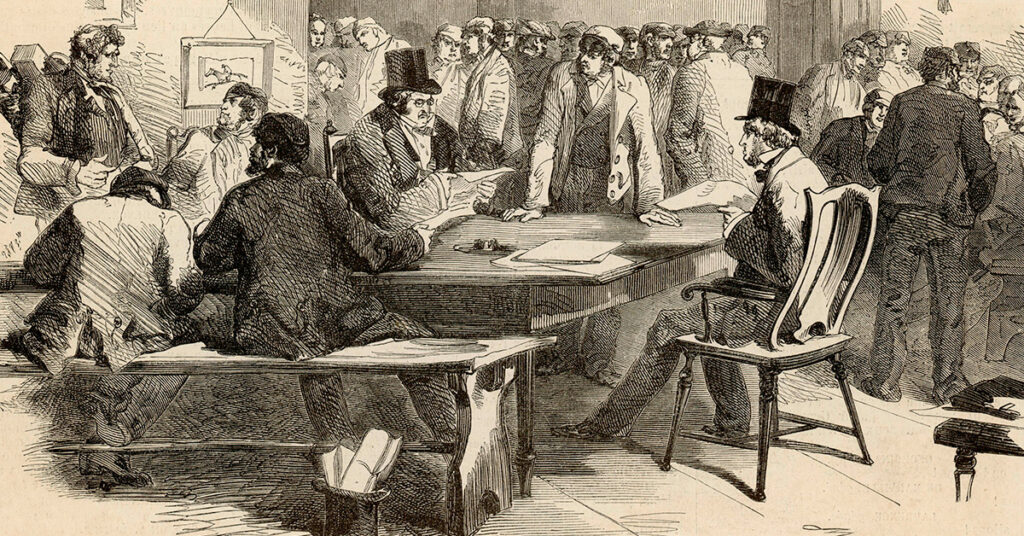A show’s history can offer valuable insight when you’re considering whether or not it is a good fit with your exhibiting plan. History can be broken down into two main factors: your own history of past success (or failure) at the show, and the show’s track record with other exhibitors. When you’re looking at both factors, try to encompass a history of at least the past three years, up to a decade if possible. Watch for patterns and trends. Is the show getting better, or worse, over time? If you don’t have your own history at the show, or can’t find adequate information on the show itself, track down past exhibitors and see what they have to say.

Do you have history with this show?
IF YES, HOW HAS THE SHOW AFFECTED YOUR SALES
Look at the numbers: past leads, sales made at the show, and sales resulting from follow-ups. Depending on your record keeping, it might not be easy to nail down an exact dollar, but you should get a ballpark. It’s not always easy to definitively label a sale as arising from a trade show, when you factor in other advertising overlap—this is where some intuitive estimation is needed.
How has the show affected your market reach
Apart from sales, your presence at the show should have generated some more brand awareness or product awareness within your industry. When you’ve attended the show in the past, did you feel like your name was “out there” afterwards?
Talk To Your Sales Staff
Even if you were at the show yourself, it’s very important to debrief your sales staff (within a week post-show, if possible) and see what they thought about the sales and leads generated, the show organization, and your company’s overall success at the show. More opinions can lead to greater insights, and help factor in to whether or not this show is still worth your time.
Allow for extenuating circumstances
From inclement weather (like snowstorms in August) to your sales staff catching the flu before the show, be sure to factor in anything that might have positively or negatively affected your success in the past. Were you and your staff adequately prepared? Were you in a good booth space and was your display as good as it could possibly be? Did your staff have enough time after the show to follow up with new leads?
As you consider these factors, be sure to brainstorm ways to compensate for any hurdles you faced before you leave for your next event!
Next, the show’s track record
Is the show respected within your industry
Some shows are more prominent within your industry than others, and if your peers respect the show and regularly attend or exhibit, it’s probably worth consideration for your own exhibiting schedule. If most of your competitors exhibit at a specific show, you should seriously consider being there too. If they’re all seen and you’re not, you risk becoming invisible in your marketplace and missing out sales that will end up in your competitors hands.
Is this A brand-New Show
Find out who the show management is, and if they manage any other successful shows. Have they produced shows in the past that have flopped? First time shows can offer a great opportunity to reach a new marketplace. On the other hand, they can also deliver less than promised. Unless you’re very confident in what a new show has to offer, it’s best to move cautiously: take a small space, or skip exhibiting this year and simply attend as a visitor to see who’s there and what it’s like.
WATCH FOR CHANGES
Even if a show has been around for years, unforeseen circumstances or changes in management can adversely affect its performance. Unless the show moves annually, watch for changes in location and venue. A significant change in the event date, and any major changes to the number of available booths, their sizes, and their rental costs can mean a change to the exhibitors and the audience you expect to see. These changes can be positive or negative, and you may not be able to tell until after the show. However, it never hurts to be prepared and know what to expect when you arrive on the show floor.
Do Your Homework
Understanding the pros and cons of a show’s history will involve two distinct analyses: the numbers from your own history with the show and the show’s track record, plus anecdotal information from your staff and other exhibitors. Take the time to compare as much history as you can. Combining the numbers and the anecdotal information will provide you with the clearest picture possible.
